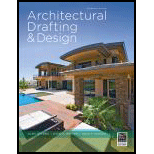
a.
To Describe: Describe the central forced air cooling and heating system.
a.
Explanation of Solution
Central forced air: It is the most commonly used cooling and heating system in today’s world.
It circulates the air with the help of duct or spaces provided around the device. It has a fan inside the system which helps the air to drive through the metal or plastic pipes which is commonly known as ducts. The air which might be hot or cool according to the requirement enters to the room through the ducts and provide hot and cool air to the room.
b.
To Describe: Describe the Hot Water cooling and heating system.
b.
Explanation of Solution
Hot Water: In this system water is heated with the help of oil and gas fired boiler after that it is passed through the pipes to the convertors or radiators of the room. Fresh water is obtained to the boiler from the supply of the house. Water circulates or flow all around the combustion chambers and absorbs heat from them. To circulates the water through the entire system a circular pump is required in the system.
c.
To Describe: Describe the Heat pump cooling and heating system.
c.
Explanation of Solution
Heat Pump: The central air forced heating and cooling system runs with the help of a circular refrigerator and a compressor system the whole assembly known as heat pump system. The heat around the building or structure is sucks and sent into the rooms through the pumps. This pumps supplies three times more heat as compare standard electric forced air system. The energy saves by the heat pumps is 30 to 50 % annually.
d.
To Describe: Describe the Zoned heating system.
d.
Explanation of Solution
Zoned Heating: The zoned heating system operates with one thermostat and one heater per room. This does not require any ducts to operate but heaters are operated in the rooms. It allows the occupants that how much energy used in the room and amount of money and power spent in that energy.
Want to see more full solutions like this?
Chapter 21 Solutions
Architectural Drafting and Design (MindTap Course List)
- How can construction project managers find a balance between speeding up schedules and the risks of making more mistakes and needing rework, especially when using methods like fast tracking?arrow_forwardHelp i keep getting the wrong answer. So I must be doing something wrong.arrow_forwardwhat is the workhours earned to date for concrete footings?arrow_forward
- What is the budgeted unit work hours, in work hours per unit for the concrete walls?arrow_forwardWhat are the total earned work hours at completion for the column forms?arrow_forward6000 units have been installed to date with 9,000 units to install. Labor costs are $23,300.00 to date. What is the unit cost for labor to date?arrow_forward
- The base rate for labor is $15/hr. The labor burden is 35% and 3% for small tools for the labor. There are 1000 units to install. Records indicate that trade workers can install 10 units per hour, per trade worker. The owners need 15% overhead and profit to pay bills, pay interest on loan and provide some profit to the partners. What is the minimum bid assuming no risk avoidance factor?arrow_forwardCan you show me how to obtain these answers thanks, will rate!arrow_forwardI have the answers for part a just need help with b mostly thanksarrow_forward
- Please explain step by step and show formulasarrow_forward5. (20 Points) Consider a channel width change in the same 7-foot wide rectangular in Problem 4. The horizontal channel narrows as depicted below. The flow rate is 90 cfs, and the energy loss (headloss) through the transition is 0.05 feet. The water depth at the entrance to the transition is initially 4'. 1 b₁ TOTAL ENERGY LINE V² 129 У1 I b₂ TOP VIEW 2 PROFILE VIEW h₁ = 0.05 EGL Y₂ = ? a) b) c) 2 Determine the width, b₂ that will cause a choke at location 2. Determine the water depth at the downstream end of the channel transition (y₂) section if b₂ = 5 feet. Calculate the change in water level after the transition. Plot the specific energy diagram showing all key points. Provide printout in homework. d) What will occur if b₂ = = 1.5 ft.?arrow_forward4. (20 Points) A transition section has been proposed to raise the bed level a height Dz in a 7-foot wide rectangular channel. The design flow rate in the channel is 90 cfs, and the energy loss (headloss) through the transition is 0.05 feet. The water depth at the entrance to the transition section is initially 4 feet. b₁ = b = b2 1 TOTAL ENERGY LINE V² 129 Ут TOP VIEW 2 hloss = 0.05 " EGL Y₂ = ? PROFILE VIEW a) Determine the minimum bed level rise, Dz, which will choke the flow. b) If the step height, Dz = 1 ft, determine the water depth (y2) at the downstream end of the channel transition section. Calculate the amount the water level drops or rises over the step. c) Plot the specific energy diagram showing all key points. Provide printout in Bework. d) What will occur if Dz = 3.0 ft.?. Crest Front Viewarrow_forward
 Architectural Drafting and Design (MindTap Course...Civil EngineeringISBN:9781285165738Author:Alan Jefferis, David A. Madsen, David P. MadsenPublisher:Cengage Learning
Architectural Drafting and Design (MindTap Course...Civil EngineeringISBN:9781285165738Author:Alan Jefferis, David A. Madsen, David P. MadsenPublisher:Cengage Learning
